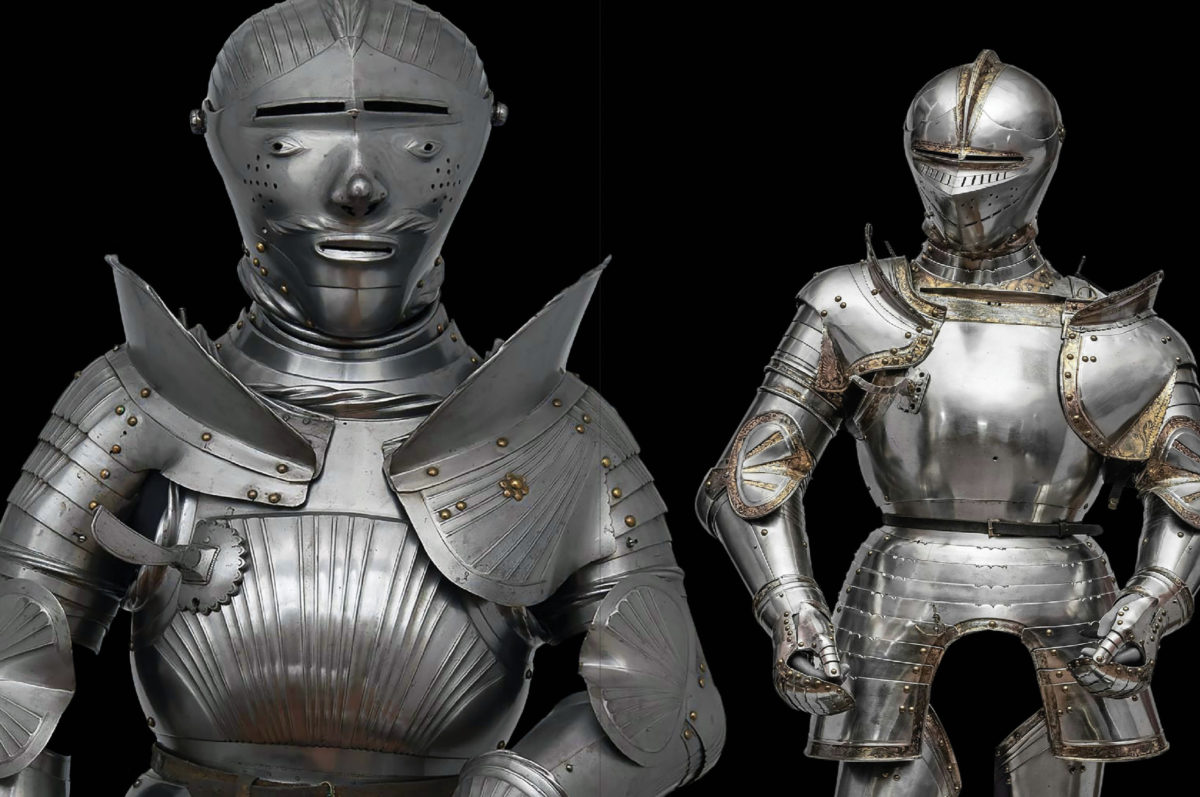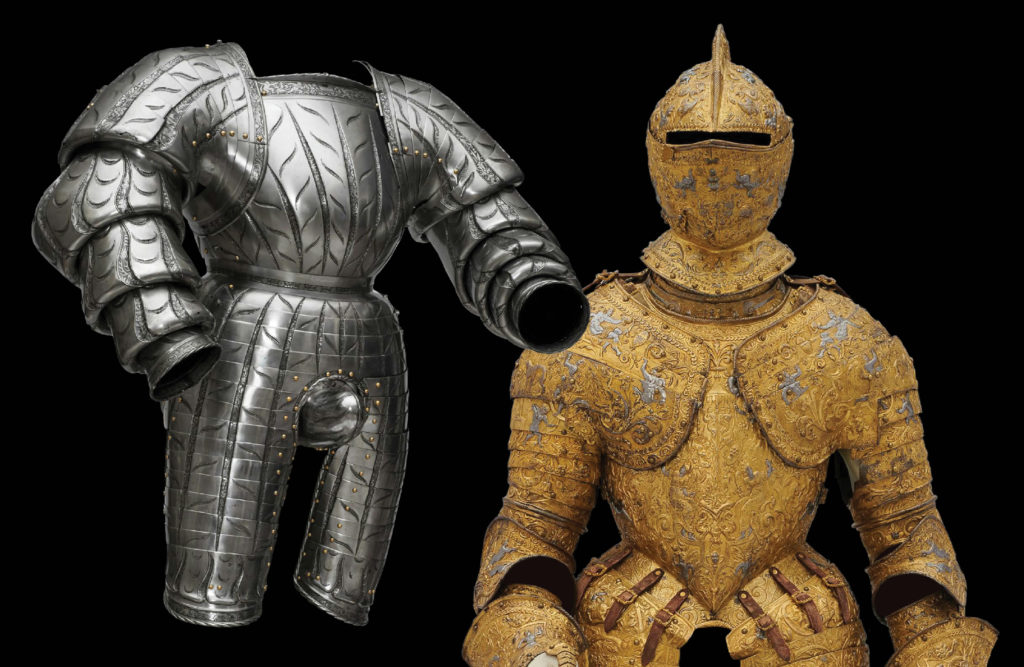15th-16th century European knight’s armor
We see two medieval suits of armor featuring the distinctive and eye-catching “codpiece” design. This element served not only as protection but also as a statement of power, masculinity, and social status. While it may appear exaggerated by modern standards, the codpiece was an essential part of a knight’s armor. It functioned both as physical defense and as a bold symbol of virility.
Originally just a cloth flap, the codpiece evolved into a carefully crafted metal piece, often ornately decorated. During ceremonies or tournaments, it became a focal point and a source of pride for the wearer. Some designs even exaggerated its size to make an impression of strength and dominance. This reflects the cultural values of the time, where masculinity and fertility were tied closely to one’s identity and power.

Looking at the two suits of armor, we see differences in style: the one on the left emphasizes symmetry and sturdiness, while the one on the right exudes grandeur and theatricality. Both show remarkable craftsmanship, where every detail—from engraved patterns to articulated joints—demonstrates the fusion of function and art. The skillful metalwork and design balance practicality with elegance. These are clear examples of the sophistication of medieval metallurgy and design.

Today, elements like the codpiece might seem humorous or odd, but they provide deep insight into historical ideals and warrior culture. Through such armor, we witness more than just protection—we see how people expressed identity, honor, and strength. Power wasn’t only shown by swordplay, but also by the armor one wore into battle. It was a blend of utility, symbolism, and artistry that defined a knight’s presence.